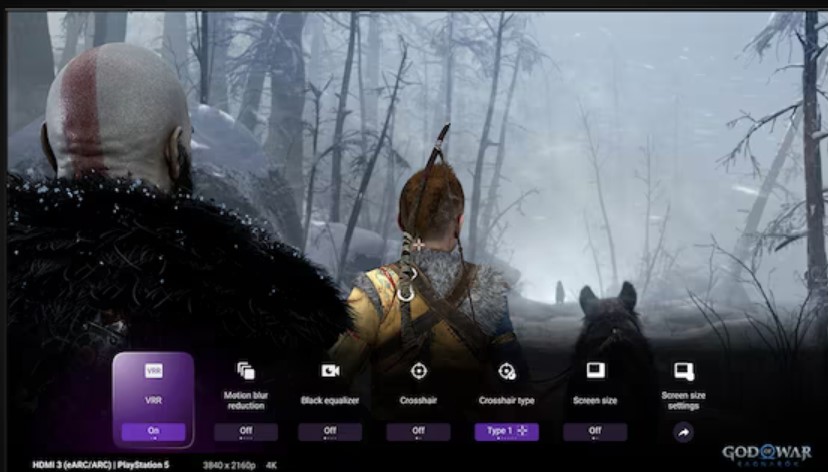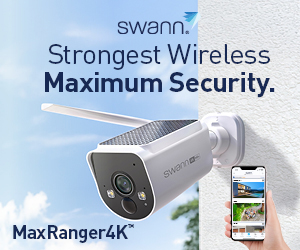The Sony XR-A95L QD-OLED beats the premium LG G3 EVO WOLED and the Samsung S95C QD-OLED. But then Sony tends to focus on features and performance over price.
It is 2023’s premium QD-OLED, with an RRP of $5995 for the 65”, sitting above the Sony A80L (LG WOLED C3 panel 680 nits peak) at $3775. The extra cost provides a substantial processor upgrade and, of course, the bright QD-OLED 1440 nits peak panel. Note that ‘L’ denotes a 2023 model.
How did Sony do it better than Samsung or LG?
The Sony XR-A95L uses a Samsung-developed Quantum Dot OLED (QD-OLED) panel. Significant differences exist between LG WOLED (white OLED) and Samsung QD-OLED.
When QD-OLED first came out, we wrote a guide (worth reading), The difference between OLED and QD OLED TV explained. We stated, ‘Oils ain’t oils, and it is clear OLED ain’t OLED. LG and Samsung OLED are like chalk and cheese. It is kind of unfair of Samsung to call it QD-OLED when the only OLED part is a Blue OLED backplane. But, hey, that is why they invented marketing’.
We were also concerned that Samsung S95C QD-OLED and its in-house designed 2022 Exynos Neural Quantum Processor 4K did not support Dolby Vision (and Samsung still does not across its entire TV range).
But Sony does, and its Cognitive Processor XR image processor (a.k.a. the new and powerful 4K MediaTek Pentonic 1000) does a brilliant job controlling this hybrid Blue OLED backplane and Quantum Dot colour layer. Note: Sony uses the term Cognitive Processor XR image processor for various MediaTek SoCs. The Sony XR-A95L is the only one using the new Pentonic.
We also like Sony’s firmware programming prowess and its new Google TV (Android TV 12) operating system, which has way more streaming services via the Google TV Play Store than Samsung and LG combined. To be fair, LG WebOS and Samsung Tizen have all Australian and major streaming services.
This is a review mainly for videophiles and nerds
We test TVs objectively using software analysis, hardware sensors, and subjective judgement. The results are given somewhat unvarnished, certainly without being influenced by the manufacturers’ marketing hype forced on unwitting consumers.
To videophiles, this is the best of 2023. You will see TV/movies as the filmmaker intended.
To Joe and Jane Average with a budget – there is no better 2023 TV. The LG 65” G3 (as low as $3470) is good; most would be very happy. The Samsung S95C QD-OLED performs well, but at $4995, and the lack of Dolby Vision knocks it out of contention.
Is it worth the money? To Joe and Jane Average – no. To someone who appreciates the finest TV image of 2023 – Absobloodlylutely!
If you want to know more, read Confused about TV Tech? That’s just what they want! (Q3 2023 mini-LED update)
Australian Review – Sony XR-A95L QD-OLED TV (65” as tested)
| Website | Product Page |
| RRP | 55/65/77” $5295/5995/7995 (Prices at23/01/24 – shop around) |
| From | Sony Online, Sony Stores, and major CE Retailers |
| Warranty | 1-year ACL |
| Made in | Assembled in Malaysia |
| Company | SONY is a Japanese multinational conglomerate corporation headquartered in Tokyo, Japan. As a major technology company, it operates as one of the world’s largest consumer and professional electronic products manufacturers, the largest video game console company, and the largest video game publisher. |
| More | CyberShack Sony news and reviews |
We use Fail (below expectations), Pass (meets expectations) and Exceed (surpasses expectations or is the class leader) against many of the items below. We occasionally give a Pass(able) rating that is not as good as it should be and a Pass ‘+’ rating to show it is good but does not quite make it to Exceed. You can click on most images for an enlargement.
First impression – WOW – look at those bright colours
I have a 2019 Sony 65” A9G (LG WOLED panel) and love it. So imagine my reaction when the 2023 Sony XR-A95L QD-OLED arrived, and we started to compare. WOW. Comparisons below are the A9G first and A95L second.
- Both are OLED, so blacks are pure black – infinite and inky deep. There is no blooming like Mini-LED or other LCD TVs.
- HDR brightness is a thing to behold. The A9G tops out at 700 nits in a 2% window – acceptable for Dolby Vision in a light-controlled room. The Sony XR-A95L tops out at 1440 nits – over twice as bright. At full screen, 125 versus 230 nits. Say no more.
- SDR brightness: Ditto – 350 vs. 515 nits at 2% and 150 vs. 220 nits at 100%.
- Colour gamut: DCI-P3 has gone from about 94% to 100%, but more importantly, the higher Rec 2020 standard goes from 70% to nearly 90%. Both are huge jumps.
- Calibration out of the box is also better – 2.5 vs <1 (lower is better).
What a difference a few years makes! It is brighter, more colourful, and the Sony ‘je ne sais quoi’ difference. We ran nearly 100 tests, and it aced them all.
The Remote – Pass
Sony calls it a premium Bluetooth and IR (Infrared) remote with backlit buttons, a microphone, an accelerometer, and a metal deck. However, progress has its cost, as it has no numeric buttons, forcing the use of the EPG, Channel Up/Down, or Voice Assistance to change Free-To-Air (FTA) channels. Fortunately, you can purchase a genuine expanded Bravia remote for $55.

Google TV OS – Pass+
The Sony XR-A95L uses the latest Google TV interface (2023) overlaid on Android TV 12 (2023) with an October 2023 security patch. If Sony follows previous patterns, we should see this updated to Android TV 13.
Setup – Pass, but do we need Samba?
Like all smart TV OSs, Google TV requires signing in with a Google Account (email and password). This allows Google to monetise your viewing habits by serving program recommendations – there is no product advertising yet.
Then you will have to sign into every streaming app – more data!
During setup, it requests you sign into Samba TV, which hoovers up all your data and sells it to advertisers for content recommendations. You don’t have to accept this – ditto.
Sony has Bravia Core (Sony Pictures movie streaming) that requires a Sony account. As a gift with purchase, customers receive ten free movies and 24 months of Sony Pictures back catalogue streaming at 80Mbps pure stream (if NBN supports it).
Settings – out of the box – Pass+
It is OLED, so there is no need to perform extensive calibration. Out of the box, the default settings produce an eminently watchable SDR picture. It strikes a decent balance between brightness, contrast, and colour. Vivid mode is a bit too saturated (but our eyes crave that), and Cinema has more natural colours but is best for dark room viewing. We experimented with custom settings, but default settings are fine.
Sony has put a lot into its XR firmware, which makes many image quality decisions for you. For example, the BraviaCam can see where people are sitting and adjust audio and video settings for the best image. Sony has simplified the settings interface for consumers while allowing complete access for professional calibration.
TV placement – Pass+
It can stand on a desktop and is 1443 (W) x 859/920 (H 1/2) x 339mm (D) x 24.9kg. The legs are attached at each corner of the set, requiring a long desktop. It can be raised 60mm to accommodate most soundbars.
Wall-mounting takes that to 1443 x 846 x 45mm (plus any wall stand offset) x 23.4kg. It uses either the SU-WL850 or SU-WL450 bracket. You cannot flush mount against the wall as there is no cable management system – power is on the right, and cables are on the left.
QD-OLED panel – Exceed
To be clear, it uses a Blue OLED backlight where every 8,294,400 pixels is a self-emissive light that shines through a Quantum Dot layer. The Sub-pixel array is red and green only. Blue is a transparent layer – not a QD and black means no subpixel in that space (solid).


- It is a true 10-bit, 1.07 billion colour panel (not 8+2 FRC) with a native refresh rate of 100/120Hz (AU has 50Hz power).
- Typical brightness 500 nits
- Peak brightness 1400 nits (1440 tested in 2% window with Dolby Vision content)
- 100% DCI-P3 of 1.07 billion colours – impressive
- 3ms GtG
- Input lag 8.5ms
- Cognitive Processor XR image processor (MediaTek Pentonic 1000, 2000MHz with ARM Mail-G57 MC2 GPU 800MHz and 32 GB onboard storage for the TV OS).
Sony has far better control of this panel than Samsung, with fewer issues of raised blacks and almost no pinkish hue under direct light conditions.
Summary: Compared to the LG G3 Evo OLED, it is about 20% brighter and has a slightly greater colour volume and dynamic range.
Ports – Pass+
- USB-A 2.0 5V/.5A/2.5W supports FAT16, FAT32, exFAT, and NTFS
- USB-A 3.2 Gen 1 5Gbps 5V/.9A/4.5W
- Ethernet 10/100Mbps RJ45 and can join a Home Network to play audio/video files from other shared devices.
- 2 x HDMI 2.0 18Gbps
- 2 x HDMI 2.1 48Gbps port 3 (eARC) and 4 – all 4K@100Hz (AU), VRR, ALLM
- 75-ohm Cable/Antenna In (F-type female)
- 2.0 Optical Audio Out (uses a 3.5mm to Optical adapter – supplied) and doubles as S-Centre Speaker In for use with select Sony Soundbars.
- Physical Mic on/off switch
- Centre Speaker In – uses two core cables usually driven by an AV Amp.
Other – Pass+
- Dual Microphones – far field
- Wi-Fi 6 AX 2.4/5GHz (not 6E AXE 6GHz)
- BT 5.2 transmit (to speakers or headphones) or switch to receive mode.
Sony speak – translator needed
- XR 4K Upscaling – Intelligently upscales and recreates content from 480p to 4K.
- XR Super Resolution – Analyses the 4K image to enhance depth and more elements.
- XR Clear Image – reduces image noise and minimises blur.
- XR HDR Remaster (Tone Mapping) – For PS5.
- XR OLED Contrast Pro – Boosts colour and contrast to help HDR details usually lost in bright areas.
- XR Ambient Light Control – senses the ambient brightness and adjusts the TV brightness accordingly. It can be overly aggressive but is better controlled on the Sony XR-A95L.
- XR OLED Motion – a mix of Black Frame insertion and predictive AI frame insertion.
- XR Tri-Luminous Max – Simple means Quantum Dot colour.
- XR Surround – creates a faux spatial sound that relies on a suitable viewing area to bounce sounds around.
How does it look? Bloody Amazing
We know what a good image is – it is our life as reviewers of several TV makes and models. The Sony XR-A95L is undoubtedly the best image of any 2023 TV. We must qualify that with the year because Sony drives the competition to do better, and who knows what 2024 will bring.
This has many components – all are tested, and the outcomes follow. As a quick upfront summary.
As a TV – Exceed
Standard Dynamic Range (SDR) free-to-air and HD/FHD streaming presents an excellent image out-of-the-box in Standard mode in daylight and Cinema mode at night. We think Vivid mode will be the one most choose – bright and vibrant but not technically colour accurate.
HDR/HDR10/Dolby Vision is superb. Compared to Mini-LED, where you can only get two out of three right – brightness and contrast at the expense of colour – this has outstanding balance.
Colour and purity – Exceed
It has 100% DCI-P3 of 1.07 billion colours – you can’t get better.




Gradients – Exceed
There is no bunching or banding – well-defined and smooth colour gradients.

Delta E colour accuracy – Exceed
Out of the box on Professional mode, it was <1 (<4 is good), and frankly, we could not meaningfully better that. Standard or Vivid mode (SDR) rises to around 2.8, which is excellent for SDR content.
DCI-P3 – Exceed
It is so close to 100% that we will give it that. Its nearly 90% of the wider Rec 2020 standard is significant – way above the LG G3 (73% and Samsung S95C 75%).
Video Modes – Pass+
Interestingly, this lacks an Auto or AI mode to determine the best setting for content – something LG does very well. While AI does this in the background,. a simple ‘D for Drive’ in Automatic gearbox car parlance would not hurt.
SDR modes include Vivid, Standard, Cinema, Professional, Calm, Photo (basically sRGB) and Imax Enhanced. We show three different modes to illustrate the difference.
HDR /HDR10/Dolby Vision (DV) is mainly automatic, and metadata takes over. You can also select Dolby Vison (Vivid/Bright/Dark), Games (FPS, RTS), Netflix Calibrated, and BRAVIA CORE calibrated. HDR/DV has more definition in the dark and light areas than any other TV.
Standard is best for most viewing, and Cinema (you will need to elevate brightness) is best for Dolby Vision. But our consumer test panel voted Vivid as the setting for bright, open-space lounges.
Sharpness – Exceed
Because of pixel-level control, the 14-point text is clear and crisp. Some of the panel members were able to read 10-point text.


Blooming – none – Exceed
There is no blooming around white sub-titles.
Motion smoothing – Pass+
It is a native 100Hz panel and uses Black frame insertion and AI to smooth the image. There was very minor stuttering at <25fps.



Brightness – Exceed
Measured at 100%
| Window Size, Peak/Sustained | HDR | SDR |
| 2% | 1440/1420 | 520/510 |
| 10% | 1150/1090 | 510/500 |
| 25% | 570/530 | 510/00 |
| 50% | 330/315 | 380/370 |
| 100% | 239/220 | 240/220 |
This is a bright TV, capable of Dolby Vision and for use in bright Aussie lounge rooms. The Ambient Light Sensor (ALS) was not as extreme as we have experienced – it is your choice to leave it on or off.
Contrast – Exceed
Perfect blacks and infinite contrast make this superior to Mini-LED or other LCD technologies.





SDR Content – Free to Air – exceed
Free-to-air and SDR HD/FHD streaming is excellent. The AI 4K upscale is the best I have seen, with excellent results from 480/720/1080p to 4K. There is no softness or blurring, as shown on LCD TVs.
The colours are vibrant, with good brightness and contrast – an excellent SDR TV.
HDR/DV – Superb
Incredible natural skin tones, higher levels of detail in the dark and light areas and an immensely enjoyable viewing experience.



Uniformity/DSE – Exceed
Being OLED, we don’t usually comment on uniformity or DSE (dirty screen effect), as each pixel is a backlight. With this, using a Blue OLED backlight and a Quantum Dot colour layer, we wanted to test the uniformity of both the backlight and colours.
- The screen had almost perfect uniformity in black and white (pixel off/on) and <1% deviation over the entire screen in colours.
- We noticed an almost imperceptible banding on a grey screen. That is due to the pixels’ triangle pattern.
- Colour gradients were excellent – as it should be on a 10-bit panel.
- There was no DSE effect, as you see on many LCD TVs.
Pulse Width Modulation – None – excellent
It uses DC dimming and is flicker-free.
Viewing angle – Exceed
It has an almost 180° viewing angle where colours remain accurate. This means it is a perfect TV to wall mount in a large open space, as all viewers will get a great experience. The caveat is the sound experience.
Reflectivity – Exceed
While it has a glossy front screen protector, it handles reflections well.


Upscale – Exceed
While many cheap TVs simply wrap the same-coloured pixel around the original (1080p needs 4, 720p needs 9, and 480 needs 20), you get a softer image upscale with ill-defined and jagged lines.
Sony’s XR applies AI to eight areas: Original, Colour, Clarity, Focal Point, Contrast, Depth, Motion, and Cross Analysis. This also applies to native 4K content. The result on 480p is stunning if perhaps a little oversaturated (which we crave).



Sound – Pass+
The Sony XR-A95L has a 2.0-channel sound comprising Left and Right x 20W each. Two simple cross-over frequency subwoofers x 10W each add a nice amount of bass – they are not seen as discrete channels in multi-channel sound. It has an automatic sound calibration feature to map the room and adjust the outputs.
Sony does not use typical down-firing speakers. Instead, the screen has Left and Right actuators behind the screen for what it calls Acoustic Surface Audio+. The actuators vibrate the screen, which acts as a speaker diaphragm/cone, and AI phases the sound to help follow the source – quite different from traditional speakers. The two rear-firing subs are Left and Right and are pretty effective.
Sound decode support
It has an inbuilt decoder that downmixes everything to its 2.0 channels (the sub-woofers are simply cross-over frequency and not identified as separate channels).
- Mono to 7.1 PCM
- Dolby Audio, Dolby Atmos, DTS, DTS-HD, DTS:X
If a soundbar is attached via HDMI eARC, it passes the metadata to it for processing.
But, there are some other interesting Sony-only tricks.
TV Centre Speaker Mode -Interesting
If you are using a home theatre AV Amp and speakers (at least 3.1), you can connect the Amp’s centre channel to the TV via a 2-core speaker cable and use it as the centre speaker. We did not test this (as we no longer use an AV AMP), but the theory is that it is better than placing a centre speaker below the TV.
Similarly, compatible Sony soundbars can connect a 3.5mm to 3.5mm audio cable to the S-Centre port and use the TV as the centre channel. We tested this, and it makes quite a clear voice difference.
S-Force Front Surround – Passable
Remember that this is 2.2 sound – not nearly speakers for virtual Dolby Atmos. Sony claims that in the right room, with sound reflecting left and right adjacent walls, it can simulate 5.1 channel sound, e.g., Left, Centre, Right forward firing and Left and Right side-firing surround.
Let’s just say that most people do not have a viewing area suitable for psychoacoustics and will never experience this faux surround.

Voice Zoom 2 – Pass+
AI detects voices, analyses them, and improves their clarity. With enhanced filtering, ambient elements are suppressed so you can hear even faint TV dialogue clearly. It is pretty good.
How does it sound – Pass+
For 2.2 TV sound, it is pretty good. Maximum volume is 80dB (plenty), and mid-bass starts at 50Hz, building to 100Hz (low-bass) quickly. From there, it is flat (good) up to 7kHz, where it dips to avoid harshness, then flat to nearly 20kHz. It is a warm and sweet sound signature ((bass/mid boosted, treble recessed) – perfect for movies.

You can adjust the Dialogue Enhancer setting to focus on clear voice. There is also an EQ that can recess but not boost frequencies.
Dolby Atmos’s spatial effect is poor. Two actuators and two subwoofers cannot create enough sound envelope to immerse you in DA. There are some minor 3D effects, but you will need a soundbar.
In comparison, the $1695 HT-A7000 virtual Dolby Atmos 7.1.2 soundbar (separate review to come) bass starts at 30kHz and provides effective, if not front-centric, Dolby Atmos 3D spatial sound. For the full Dolby Atmos effect, you need to add Sony’s optional rear speakers ($849 SA-RS5), and I recommend a dedicated subwoofer ($695 SA-SW5) for room-shaking bass.
Read:
- How to tell if you have good music – sound signature is the key
- How to buy a soundbar that meets your needs?
- Five tips for better TV sound – Dolby Atmos for beginners
BRAVIA CAM – Pass
It innocently sits on top of the screen and is effective to a maximum range of 7m (details here)

- Video chat
- Ambient Optimization Pro – optimises the image and sound to where people are sitting
- Proximity Alert – if someone is sitting too close
- Gesture Control –
- Auto Power Saving Mode
- Privacy Switch and clear data function
While many may feel this is intrusive (as our test panel felt), it serves a useful purpose.
Voice control – Pass+
As a Google TV, it supports Chromecast and Google Assistant via built-in mics, remote, or Google Assistant speakers. It offers a full suite of Google Assistant features.
A list of TV commands here basically covers controlling the device and searching for content.
Alexa is supported via a smart phone or Echo speaker.
Siri and Airplay 2 are supported via HomeKit and an iPhone or iPad.
Games – Pass+
We are not gamers, so we cannot test this.
- Games menu
- Auto genre picture mode
- Auto HDR tone mapping
- Dolby Vision Gaming 4K@120Hz (100Hz in Australia), ALLM, VRR
- Black Equalizer to reveal details in the darkest shadows.
- Crosshair overlay
- Screen Size to shrink down to a 27” monitor
- Multi-View split screen
- Supports PS5 and Xbox X

Power – Pass
While it has never exceeded 200W for Dolby Vision content and 100W for SDR Free to Air tests, Sony advises that it can get up to 444W. At 40 cents per kilowatt hour, that is 8-20 cents.
In sleep mode, it is <1W, and Always on is around 15W.
CyberShack’s view – The Sony XR-A95L QD-OLED is currently the world’s best TV
It is the class leader in 2023 – marginally above the LG G3 on all counts – its XR processor has impressive upscale and better colour volume. And as Samsung does not support Dolby Vision, it is out of the race.
To put the word ‘currently’ into perspective, the 2022 A95K QD-OLED was very good. Sony says the A95L is twice as bright (980 vs. 1440 nits) and has vastly improved the out-of-the-box calibration. Add to that Google TV 12, and you can see why it is the leader.
And herein lies the rub. After seeing it compared to my perfectly great (and best-of-class) 2019 Sony A9G OLED, I covet this quite badly – but I don’t need it. What will 2024 models bring? Well, it could be the last QD-OLED, and that is my concern.
Sony has revealed a new backlight technology that can produce a peak of 4000 nits, which may spell the end of QD-OLED dominance in 2025 and beyond.
So, I must return to my perfectly adequate Sony A9G OLED and superb Sonos ARC/2 x ERA 300rears and Sub 7.1.4 sound.
Sony XR-A95L rating
It is a 10 out of 10 by 2023 standards, but that infers there is nothing Sony could have done better. My only criticism is Sony’s lack of a comprehensive user manual, more explanation of how to use the features and more comprehensive/relevant specifications.
- Features: 95 – I really don’t know what else they could have added, and from a consumer’s perspective, much of what it does is automatic.
- Value: 95 – Unlike other brands, Sony’s RRP is pretty well what you pay. At $5995, it is $1000 more than the Samsung S95C QD-OLED and is worth every penny. It is $2,500 more than the current LG G3 runout price, and the Scrooge in me says I would be pretty happy with that.
- Ease of use: 90 – 1-year warranty is too short. Out of the box experience is excellent.
- Performance: 95 – I cannot fault it – it passed over 100 tests with aplomb.
- Design: 90 – Well done, but it loses points for a lousy 1-year warranty (it should be at least 3 years) and cable management when wall-mounted, which can be a problem.
Sony XR-A95L, Sony XR-A95L, Sony XR-A95L
CyberShack Verdict
Sony XR-A95L QD-OLED
65" $5995














2 comments
Peter Matthews
Maybe. After your reccomdation few months ago on 3aw bought a TCL 845 mini oled in 75 inch on special at JB hifi for $2850 including their better range soundbar. Absolutely incredible picture and sound. As a Sony mid/upper range customer for the past 25 years for all TV and sound gear I was sceptical but the equivalent Sony was 77 inch at $6000. Everybody who visits goes “wow, where did you get the flash tele.” Colors and picture are the best available in real life in.my opinion. Anything wrong? Yep the silly google TV remote that drives it is disgusting. Hopeless to work easily. TV only sound is terrific with inbuilt sub woofer even without the soundbar. Value for money nothing comes close in my opinion.
Ray Shaw
Hi Peter
Yes, ther C845 gets my vote as both the beast value TV and the best overall consumer TV of 2023. I agree on the remote which is a standard Google TV remote and has no number buttons to change free to air channels. Fortunatley you can buy a numeric remote for about $30 from eBay https://www.ebay.com.au/sch/i.html?_from=R40&_nkw=TCL+C845+TV+remote&_sacat=0&_sop=15
Go for it!